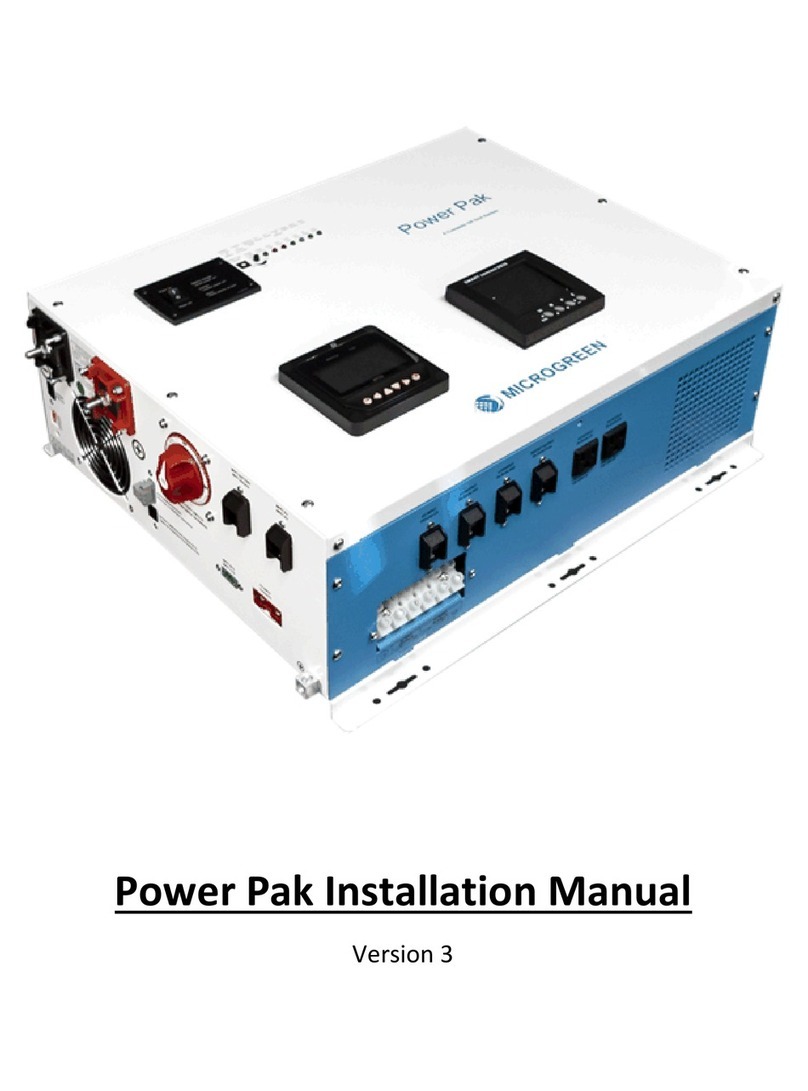9
The Power Pak combines an inverter, AC auto-transfer switch, battery charger, and solar charge controller
into one complete system with a peak overall conversion efficiency of 80% to 85%, with an inverter efficiency
of 95%. It features power factor corrected, sophisticated multi-stage charging and pure sine wave output with
unprecedented high surge capability to meet the demanding power needs of inductive loads without
damaging the equipment.
It works by converting power from solar panels to power home appliances. Excess power is used to charge a
battery bank, which can be used during periods of low sunlight.
The Power Pak can be optionally set up as a back-up power source for the grid or generator. This can be done
by connecting it to an AC power source - either the electrical grid or a generator - and by setting it to AC
Utility Priority Mode. When connected to the AC source, the batteries can be maintained at a high state of
charge and can act as a backup power source. When utility AC power cuts out or falls below a certain
threshold, an auto transfer switch automatically transfers the load to the Power Pak’s output. Once the AC
utility power is restored, and the load is automatically reconnected to AC utility power.
The Power Pak’s settings can alternatively be configured to prioritize power usage from the battery over
power from AC sources. This helps to extract maximum power from the battery in renewable energy systems.
This is achieved by setting the Power Pak to Solar Priority mode.
For optimal performance the Power Pak must be installed and operated properly. Please read the instructions
in this manual before installing and operating the Power Pak. Also refer to the Power Pak Installation Manual
for additional details for battery and solar panel connections.
The Power Pak is fully certified to the UL standard and to the CSA standard, thus meeting rigorous safety and
quality standards. All individual components, connections, and meters as well as the unit as a whole are thus
UL certified.
The Power Pak does not require any routine maintenance. Associated system components, such as batteries,
solar panels or generators, may require maintenance and their respective user manuals should be consulted.
4.1 Recommended Uses
The Power Pak is suitable for renewable energy systems, grid powered systems, RVs, cabins, marine
applications and emergency appliances. Below are some examples of the types of appliances that can be used
with the Power Pak.
▪Power tools –circular saws, drills, grinders, sanders, buffers, hedge trimmers, air compressors.
▪Office equipment –computers, printers, monitors, fax machines, scanners.
▪Household items –vacuum cleaners, fans, fluorescent and incandescent lights, shavers, sewing
▪machines.
▪Kitchen appliances –coffee makers, blenders, ice markers, toasters.




























